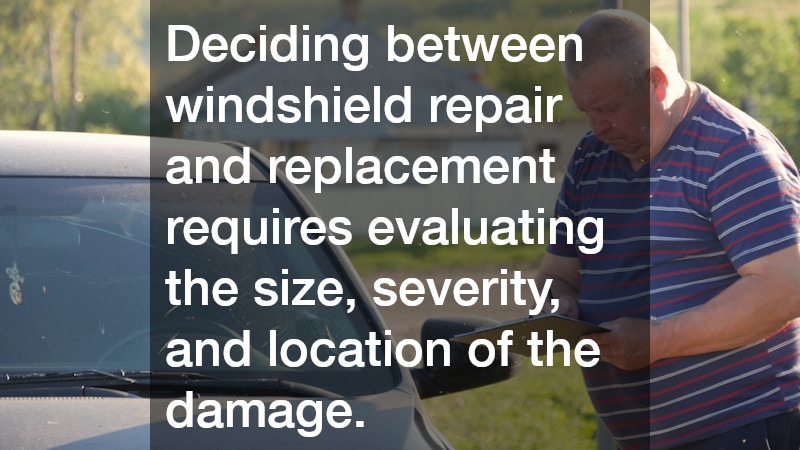A windshield is more than just a pane of glass—it plays a vital role in maintaining visibility, structural integrity, and passenger safety. When cracks or chips appear, drivers are often left wondering whether a repair will be enough or if a full replacement is necessary. Making the right choice can prevent long-term safety hazards, save money, and keep you in compliance with the law. This guide breaks down the key factors to help you make an informed decision.
1. What Are the Signs That a Windshield Repair is Sufficient?
1.1. Types of Damage Suited for Repair
Small chips and cracks are often candidates for repair, especially if they are no larger than the size of a quarter. Bullseye cracks, star breaks, and small surface chips can typically be filled with resin, preventing the damage from spreading.
1.2. Assessing the Severity of the Damage
The general rule of thumb: if the crack is less than three inches long and does not obstruct the driver’s line of sight, repair is usually possible. Damage limited to the outer layer of the glass is less severe than damage that penetrates deeper.
1.3. Calculating Cost-Effectiveness of Repairs
Repairs are usually cheaper than replacements, often costing less than a fraction of a new windshield. Beyond cost savings, repairs can be completed quickly—sometimes in under 30 minutes—allowing you to get back on the road with minimal disruption.
2. When is a Full Windshield Replacement Necessary?
2.1. Impact of Cracks on Structural Integrity
Windshields contribute up to 30% of a vehicle’s structural strength. If a crack compromises the integrity of the glass, especially in the case of large spiderweb cracks or multiple fractures, replacement becomes essential to ensure passenger safety.
2.2. How Crack Position Affects Replacement Need
Location matters. Cracks that extend into the driver’s line of sight can distort vision, even after a repair. Likewise, cracks along the edges of the windshield are more likely to spread, increasing the risk of complete failure. In such cases, replacement is the safer choice.
2.3. Knowing Legal Requirements for Windshield Replacement
Different states have laws regulating windshield condition. For example, cracks that impair visibility or exceed certain lengths may legally require replacement. Ignoring these rules could result in fines or failed vehicle inspections.
3. How Do Insurance Policies Affect Windshield Repair or Replacement?
3.1. Understanding Comprehensive Coverage
Many insurance policies include coverage for glass repair or replacement under comprehensive plans. In some cases, insurers may even waive the deductible for repairs, making it more cost-effective to fix small chips promptly.
3.2. Claims Process for Repair vs. Replacement
Filing a claim for repair is usually quick and straightforward, and many insurers work directly with auto glass shops. For replacements, the process may involve higher deductibles and slightly more paperwork, depending on your policy.
3.3. Cost Implications on Premiums
Generally, windshield claims do not raise insurance premiums, especially for repairs. However, frequent claims or replacements may impact your rates over time. Reviewing your policy helps you understand the best financial decision.
4. Can DIY Windshield Repairs Be a Viable Option?
4.1. Evaluating the Effectiveness of DIY Kits
Over-the-counter repair kits can temporarily stop a crack from spreading, but they rarely provide the same level of clarity or durability as professional repairs.
4.2. Safety Considerations for DIY Repairs
Improperly performed DIY fixes can leave behind weak spots that compromise visibility or structural strength. If the windshield plays a role in airbag deployment during a crash, an incomplete repair could increase injury risks.
4.3. Comparing Costs: DIY vs. Professional Services
DIY kits may cost under $30, but the results are often temporary. Professional services, while more expensive, usually include warranties and ensure the glass meets safety standards.
5. How to Choose a Reliable Windshield Repair or Replacement Service?
5.1. Identifying Certified Professionals
Look for auto glass technicians certified by organizations such as the Auto Glass Safety Council (AGSC). Certification ensures that the service meets industry safety and quality standards.
5.2. Reviewing Customer Testimonials and Past Work
Online reviews, testimonials, and before-and-after photos can give you confidence in a service provider’s reputation and workmanship.
5.3. Comparing Service Warranties and Guarantees
A trustworthy repair or replacement service will back their work with warranties, ensuring peace of mind in case of defects or recurring issues.
Deciding between windshield repair and replacement requires evaluating the size, severity, and location of the damage, as well as considering insurance coverage and professional expertise. Small chips and cracks can often be repaired quickly and affordably, while extensive damage usually calls for a full replacement to maintain safety. By understanding these key factors and working with a reliable professional, you can protect both your vehicle and your passengers while avoiding unnecessary costs.




